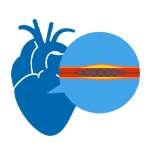
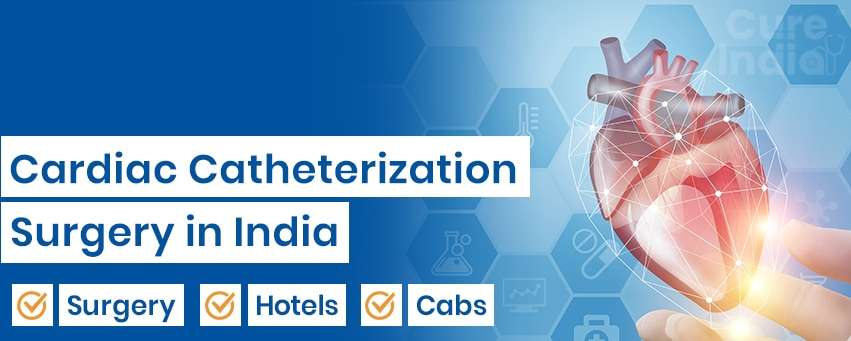
Cardiac Catheterization, also known as Coronary Angiogram, Cardiac Cath, Cardiac heart cath, Heart Catheterization, or Cardiac Heart Catheterization is a diagnostic technique that is used to evaluate heart health. In this procedure, a narrow, thin, flexible, and hollow tube called a catheter is inserted from the leg, arm, or groin of the patient, and it is moved to the coronary artery.
Once the catheter reaches the heart, a dye is injected through the catheter. The movement of dye within the arteries is captured by the X-ray images that show its movement and it highlights any constriction in the arteries. This is known as Cardiac Angiogram. This procedure is performed to evaluate any damage in the heart muscles, blood vessels, or heart valves. During this process, the patient’s heart rate and blood pressure are continuously monitored throughout the procedure.
Every year, thousands of African pataients visit India for cardiac procedures including cardiac catheterization. Cardiac procedures in India are not only cost-effective but also of high-quality, performed by cardiac specialists at state-of-the-art cardiac catheterization clinics. This page will be a complete guide to help patients avail cardiac catheterization procedure in India.
Cardiac heart catheterization are of 2 types: The Right Heart Catheterization (RHC) and the Left Heart Catheterization (LHC). During the right heart catheterization, the doctor will insert the catheter into the blood vessel from the elbow, neck, or leg and it is done to examine the right-side of heart whereas during the left heart catheterization, the catheter is inserted in the blood vessel from the arm, the wrist, or the leg and is performed to examine the left-side of heart.
A survey shows that out of 33 participating countries in Africa, 18% of them don’t have registered cardiologists. For a population of 1.2 billion, only 2000 cardiologists are there in Africa. Whereas, there are 5,500 cardiologists in India. Also, the success rates of treatment in India have increased drastically.
India’s cardiology hospitals have the most up-to-date infrastructure and equipment, which boosts the treatment process. The treatment in India is approved by international health organizations. In addition to this, the medical cost is much cheaper in India as compared to other countries such as the UK and US. The cardiac catheterization cost in different countries are:
Cardiac catheterization is a diagnostic procedure that is used to evaluate the condition of the heart and blood vessels. Here, a catheter is inserted into a blood vessel in the groin or wrist, and guiding it to the heart. This helps doctors assess blood flow, detect blockages or abnormalities in the coronary arteries, and measure pressures inside the heart chambers. Because this procedure requires both advanced skill and extensive experience, choosing the right cardiac specialist is important. India is home to many highly trained interventional cardiologists who are recognised for their expertise and exceptional patient outcomes. Below are some of the leading doctors for cardiac catheterization procedure in India:
Dr. Ashok Seth is one of India’s leading interventional cardiologists, known for his expertise in complex angioplasty, structural heart procedures, and advanced cardiac catheterization procedures. With over forty years of experience, he has performed thousands of high-risk interventions and cardiac techniques till date.
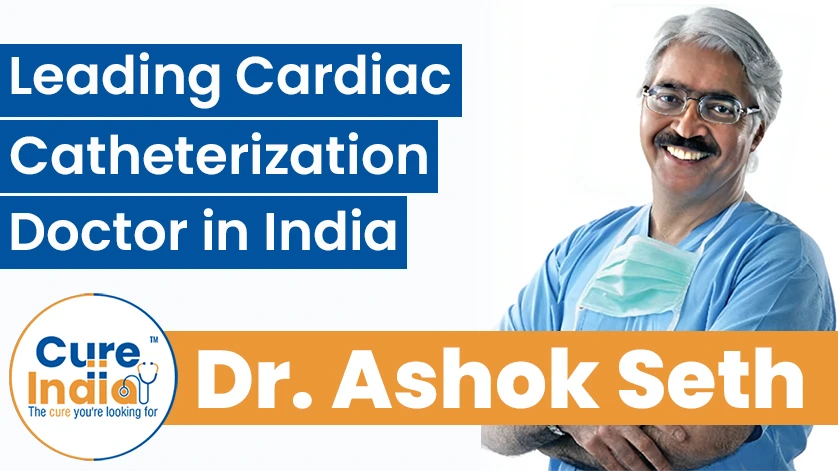
Dr. T.S. Kler is a veteran interventional cardiologist with specialities in coronary angioplasty, electrophysiology, and advanced device implantation. With experience of over 37 years, the doctor has performed over 35,000 angioplasties till date. He is recognised for his expertise in heart rhythm management and catheter-based cardiovascular treatments.
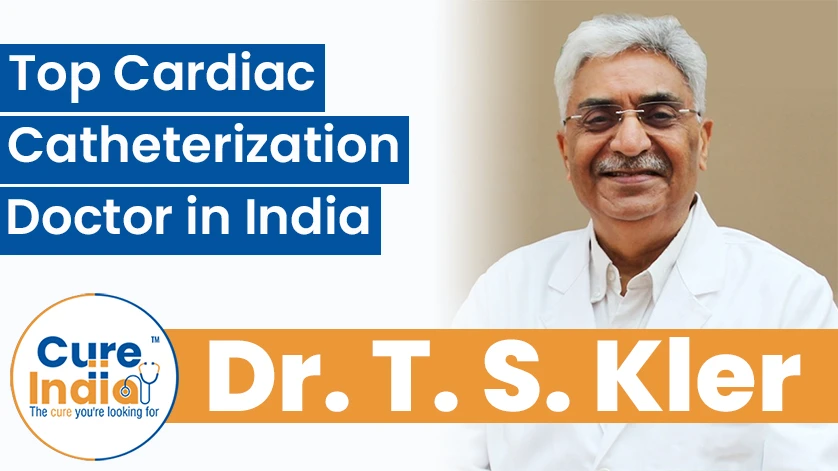
Dr. Atul Mathur is a regarded interventional cardiologist known for his expertise in carotid stenting, peripheral vascular interventions, and structural heart procedures. With more than 34 years of experience, he is regarded as an expert in complex vascular catheterization and minimally invasive cardiac therapies.

Dr. Balbir Singh is a highly acclaimed interventional cardiologist and electrophysiologist, known for his expertise in angioplasty, complex rhythm management, and device implantation. With an experience of over 35 years in advanced catheter-based treatments, he is recognised as an expert in delivering comprehensive cardiac and arrhythmia care.
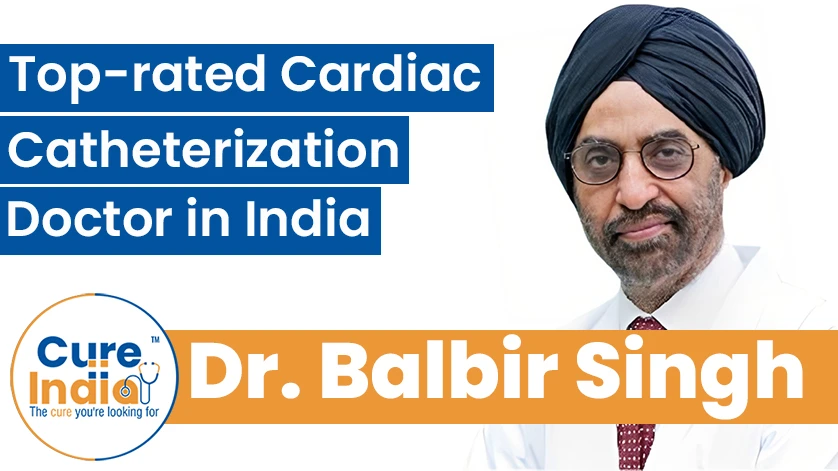
Cardiac Catheterization is performed to diagnose various heart-related problems such as blood vessel constriction, poor heart muscles, damaged heart valves, etc. Your doctor may suggest you for arterial cardiac catheterization to examine the following conditions.
Before the exam, you will be given medication to assist you in calming down. Care providers often prepare an area on the patient's arm, neck, or groin by cleaning and sterilizing the area before inserting an intravenous (IV) line. First, the sheath (bigger, thinner plastic tube) is inserted into the patient’s artery (leg or arm), and then the catheter (longer plastic tube) is placed in the sheath and guided by fluoroscopy so that the doctor can move the catheter to the heart. After that, the doctor is ready to perform the diagnosis mentioned below:
A stent may be implanted when angioplasty is performed to clear a blockage. The exam might run anywhere between 30 and 60 minutes. The test duration might be extended if additional, non-standard processes are required.
Performing an angiography using a cardiac cath takes around 20-30 minutes on average. It is often performed as an outpatient operation on the same day it is planned. Some cardiac cath procedures may take more time, and some patients may need a brief hospital stay.
Even while the actual procedure only takes around 30 minutes, the time spent getting ready for it and recovering may easily exceed several hours. Expect to spend the whole day in the hospital and have a ride home arranged after the surgery. Instructions on what you may and cannot consume in the 24 hours before your heart catheterization will be provided. You will likely be advised to fast for at least six to eight hours before the procedure.
Tell your doctor about all the drugs you're taking, including the ones you get from the drugstore. Please don't stop taking them until told to by your doctor; you may be asked to hold off until after your heart catheterization. If you have any known allergies, the nurse doing your operation will want to know about them, especially to iodine, rubber, latex, or any medications. Do not skip wearing your hearing aid if you normally do so. Bring your glasses with you if you need to use them.
There is a small but real risk that a cardiac cath might harm an unborn child, so it's important to discuss your pregnancy status with your doctor. Pregnancy-related radiation exposure has been linked to a higher risk of congenital anomalies. If you are nursing, you should also let your doctor know.
In rare cases, a patient undergoing a cardiac cath may have an allergic response to the dye used in the procedure. Make sure your doctor knows if you have any allergy or sensitivity, including medications, contrast dye, iodine, or latex. Furthermore, you should inform your doctor if you have renal failure or any other kidney issues.
Some patients experience discomfort or agony from having to remain immobile on the cardiac cath table for the duration of the procedure. Depending on your unique health situation, there may be additional side effects and dangers. Talk to your doctor about your worries before the operation.
During the cardiac heart cath procedure, the nurse will place an IV (Intravenous Line) into the vein in your arm, to give you medication. This medication will keep you sedated to make sure the procedure is comfortable. The amount of sedation you may need depends upon the reason for doing this procedure. The nurse will then shave and sanitize the area from where the catheter is to be inserted.
Now, First, the doctor will insert a needle in your blood vessel, place a guidewire in that needle, and take the needle out. Then, the doctor places a sheath which is a small tube around the guidewire into the blood vessel and removes the guidewire. After that, a catheter is placed into that sheath. Now, the doctor will carefully guide the catheter and move it towards the heart.
Different kinds of instruments may be attached to the tip of the catheter which is used to perform various procedures such as monitoring blood pressure within every heart chamber and in the veins connecting to the heart, seeing the interior of the vessels, drawing blood from different parts of the heart, and performing a biopsy stent placement, coronary angioplasty, etc.
After the completion of the procedure, your doctor will carefully remove the catheter, the sheath, and the guidewire. After that, some amount of pressure may be applied at the site from where the catheter was inserted to stop the bleeding. Then you will be shifted to the recovery room where you may relax until the effects of anesthesia wear off and your blood pressure and heart rate will be monitored for a few hours to make sure there are no side effects of the procedure.
In case the catheter was inserted from your groin, you will need to lie flat on your back while keeping your legs straight for 3 to 6 hours to make sure there is no excessive bleeding. Your doctor will inform you to drink plenty of water so that the contrast agent/dye used in this procedure is cleared up and eliminated easily from the body. You may need to urinate frequently because of this reason.
Indian cardiologists are experienced in using the best and latest technology to provide supreme service at a low cost. The Cardiology hospitals in India provide the treatments like TAVR, MitraClip, LVAD, etc. The cost of this procedure is different for every patient, depending upon the type of procedure that is performed, the hospital you select and its location, the charges of your selected doctor, the patient’s condition, etc. However, the average cost of cardiac catheterization in India is around $500. This cost is half of what it costs in countries like the United States of America and the United Kingdom. Below is a table showcasing the cardiac catheterization cost in India:
| Treatment Name | Cost in India | Stay in India |
|---|---|---|
| Cardiac Catheterization Procedure in India | $500 | 0 - 1 Day |
It is estimated that the risk of death and significant complications after diagnostic cardiac cath operations are less than 0.05% and less than 1%, respectively. The hazards and consequences of heart catheterization have been greatly reduced because of the development of smaller catheters, the widespread adoption of the trans-radial technique, and the rising technical proficiency of the operators. Complications from this often-performed life-saving treatment should be avoided with careful attention to detail.
You should follow the instructions that your healthcare provider will give you. Maintaining a healthy lifestyle plays a crucial role in overall good health. Your healthcare provider may give you some guidelines mentioned below to follow after getting discharged from the hospital:
